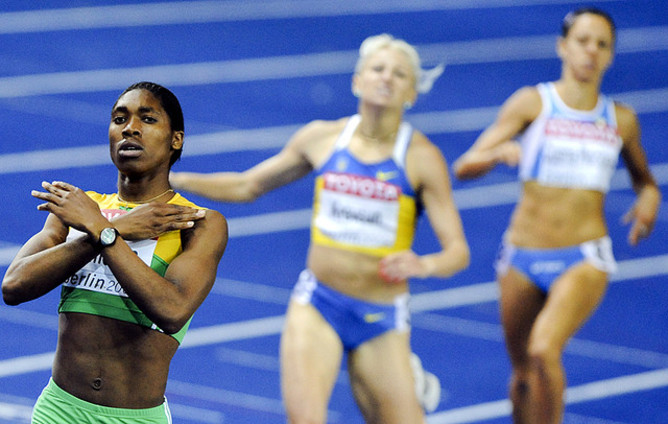the gender games
 More women than ever have competed in the 2012 London Olympics than any previous games. For the first time, every country represented at the Olympic Games has sent women to compete in London. This includes Saudi Arabia, a country that has never previously sent any women athletes to the Olympics.
More women than ever have competed in the 2012 London Olympics than any previous games. For the first time, every country represented at the Olympic Games has sent women to compete in London. This includes Saudi Arabia, a country that has never previously sent any women athletes to the Olympics.
Women’s boxing also made its debut at the London Olympics, a sport previously considered to be too violent for the fairer sex. Additionally, for the first time ever, the American team sent (slightly) more women than men to the games.
Yet, in the lead-up to the games, women were not exactly treated as equal to men. First, champion swimmer Liesel Jones came under scrutiny over her body. Media outlets questioned whether she was in “peak condition”, despite the fact that, well, she had just qualified for the Olympics. Moreover, the scandal over the women’s basketball team flying to London in cattle class while their less successful male counterparts flew business saw the word “sexism” creeping into headlines. A similar incident occurred with the respective male and female Japanese soccer teams.
As much as the various successes and setback women have faced over the last few weeks is important, the debate has sidelined a different gender issue.
Caster Semenya is a world champion middle-distance runner from South Africa. In 2009, she won Gold in the World Championships in Berlin. She ran at an incredibly fast – but not record-breaking – speed. However, organisers grew suspicious with the vast improvements she made over a short period of time. First, they thought she might be taking drugs. When the tests were negative, they then considered that she might be a man.
For eleven months she was sidelined for gender testing, deemed to be too fast and too muscular to have been competing honestly. Prominent South African civic leaders, commentators, politicians, and activists denounced the testing as potentially racist, and certainly against the tenets of human rights. They felt that the testing was an invasion of privacy. In 2010, the International Association of Athletics Federations cleared Semenya to return to international competition, though she had very high levels of testosterone for a woman.
Semenya carried the South African flag at this year’s opening ceremony. Yet controversy persisted. The International Olympic Committee (IOC) moved to instate new gender testing regulations. Under the new rule, women with high levels of testosterone have to undergo sex verification procedures. Women with the same level of testosterone as men will additionally not be allowed to compete against other women.
The move brings up a lot of controversy as well as questions about what biologically distinguishes a woman from a man. Testosterone is one measure, perhaps. However, British endocrinologist Peter Sonksen undertook a study which showed that 25 per cent of male athletes have below average testosterone levels. Certainly, hormones don’t give a definitive answer about sex categories.
One could suggest that it is not a biological argument which the IOC making. Rather, it has to do with the disbelief that a woman can simply be an incredibly good athlete. Semenya’s muscular physique and talent simply doesn’t fit in with stereotypes of what women are supposed to look and be like.
Importantly though, with cases such as these, and indeed, the experiences of everyday people, is that sex is not a binary to the degree previously thought.
According to ReachOut, 1 or 2 in 100 people are born intersex – with sex characteristics which are not easily defined as specifically male or female. 1 in 1000 babies are operated on so that they will conform to a particular male or female norm. A professor of anthropology at Berkeley, Rosemary A. Joyce, says that “Clearly, if you have to alter one in a thousand people, the categories are not natural.”
Sex may be better considered as a continuum or as a concept with many more components than two. This idea is particularly problematic for the Olympics where competitors are precisely divided along lines that might not be so clear (apart from equestrian where all the genders compete together).
The divide between men and women at the Olympics has started to unravel in London. Women have started demanding better seats, more opportunities to compete and more respect. More deeply though, and as Semenya’s ordeal shows, the biological line between the two sexes has become complex.


Pingback: The Fifty Second Down Under Feminists Carnival | Lip Magazine